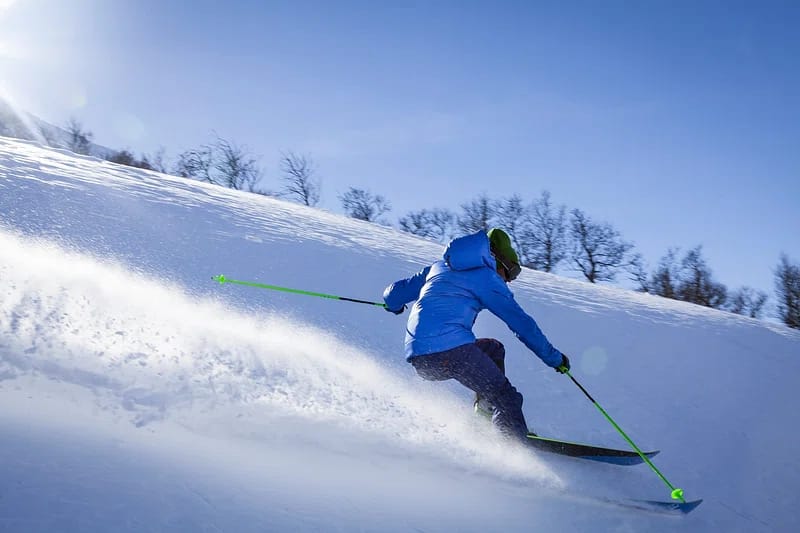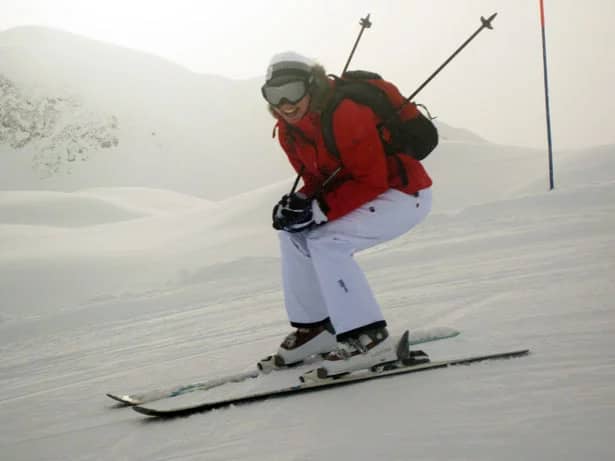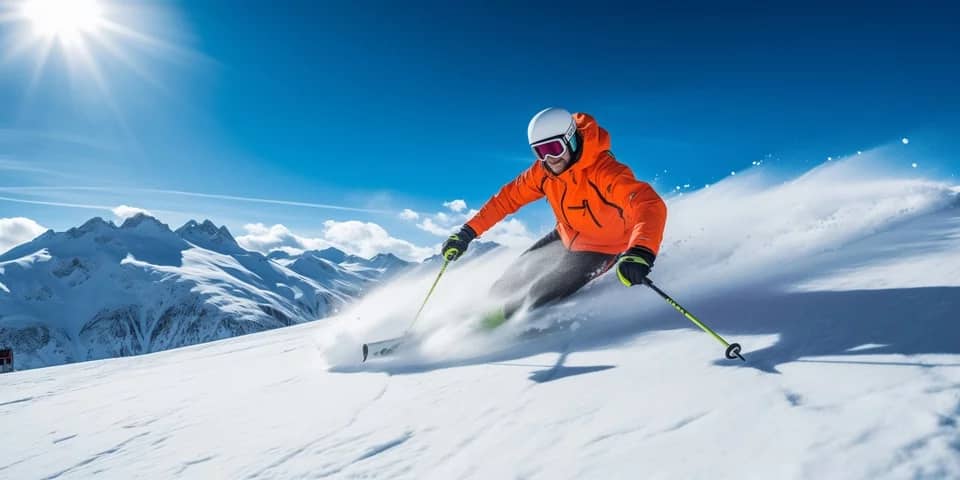Table of Contents
How to Layer for Skiing
Welcome to the snowy slopes of wisdom, where we unravel the secrets of layering for skiing. Imagine gliding over the pristine powder with ease, your body perfectly tempered against the chill. That’s the magic of mastering the art of layering. But why is it so crucial?
Importance of Proper Layering
Layering is not just about staying warm; it’s about smart warmth. It’s the fine balance between insulation and ventilation, ensuring you remain cozy without overheating as you carve down the mountainside. Proper layering is the linchpin for comfort, performance, and protection against the elements. It’s the shield that guards you from the icy bite of winter while allowing you the freedom to move and breathe.
Understanding Layers for Skiing
When we talk about how to layer for skiing, we’re delving into a strategy, a methodical approach to clothing that caters to the dynamic environment of the slopes. It’s about understanding the synergy between base, mid, and outer layers, and how they work in concert to regulate your body temperature, wick away moisture, and block out the cold.

The Basics of Layering for Skiing
Embarking on a skiing adventure without understanding the fundamentals of layering is like venturing into the wilderness without a compass. It’s essential to grasp the concept of layering, which is the cornerstone for comfort and performance on the slopes. Let’s dive into the basics that will keep you warm, dry, and ready to carve up the mountain in style.
What is Layering?
At its core, layering is a strategic method of dressing using multiple garments that can be added or removed in response to the body’s temperature and the external weather conditions. Think of it as your personal climate control system. Each layer serves a distinct purpose and works in harmony to protect you from the elements. When done correctly, layering allows for flexibility and adaptability, which is crucial in the ever-changing mountain environment.
Why is Layering Essential for Skiing?
Why, you might ask, is layering indispensable for those looking to hit the slopes? The answer lies in the dynamic nature of skiing. As you swish down the ski runs, your body generates heat, but once you’re on the lift heading back up, the chill can set in quickly. Layering enables you to regulate your body temperature effectively, ensuring you stay warm but not overheated.
Moreover, conditions on the mountain can shift rapidly. One moment the sun is beaming down, and the next, a cold front rolls in. With a well-thought-out layering system, you can swiftly adjust to these changes, maintaining optimal comfort. It also helps manage moisture; wicking sweat away from your skin is just as important as blocking out snow and wind. Fail to layer appropriately, and you might find yourself shivering on the chairlift or sweating on the slopes—neither of which is a pleasant experience.
Detailed Guide on How to Layer for Skiing
Are you gearing up to hit the slopes? Perfecting your layering game is like nailing a smooth, controlled turn on a steep run—it’s essential for an outstanding experience. Let’s dive into the nitty-gritty of constructing your personal comfort zone with the right apparel.
Choosing the Right Base Layer
Imagine your base layer as the foundation of a cozy, alpine cabin—it’s got to be solid. The best materials for a base layer are those that wick moisture away from your skin. Think synthetics like polyester or natural fibers like merino wool. A quick tip: steer clear of cotton, as it’s about as helpful as a snowball in an avalanche when it comes to keeping you dry and warm. Aim for a snug fit to trap body heat effectively.
Selecting the Perfect Mid Layer
Now, for the mid layer—this is your insulation, the equivalent of the cabin’s log fire. It’s all about retaining the heat your body generates. Fleece, down, or synthetic insulators are your go-to options here. The thickness of the mid layer should be chosen based on the temperature and your activity level. A thinner layer works wonders on a vigorous day, while a thicker one is your best friend on a chairlift in colder climes.
Finding the Ideal Outer Layer
Last but not least, the outer layer shields you from the elements like a sturdy cabin roof. It should be waterproof, windproof, and breathable. High-tech membranes like Gore-Tex are the gold standard. Remember, this layer needs to provide protection while still allowing for a range of motion—after all, you’re skiing, not impersonating a snowman! Vents are a plus, as they offer a quick way to regulate your temperature.
Common Mistakes to Avoid When Layering for Skiing
When you’re carving down the slopes, the last thing you want is to be bogged down by poor clothing choices. Let’s dive into some of the common pitfalls that skiers face when bundling up for the cold. Avoid these, and you’ll be well on your way to a comfortable, exhilarating day on the mountain.
Over-layering
It’s a chilly morning, and you’re tempted to pile on every piece of clothing you own. But beware, over-layering can be your downfall. It might sound counterintuitive, but too many layers can lead to excessive sweating, which then freezes in the frigid air, leaving you colder than if you’d worn less. A good rule of thumb? Stick to three layers: a base, mid, and outer layer. This trio is the holy grail of ski wear, allowing you to adjust your temperature with ease.
Choosing the Wrong Materials
When selecting your ski attire, the material is everything. Cotton might be your go-to for everyday comfort, but on the slopes, it’s a no-go. Why? Once wet, cotton retains moisture and loses its insulating properties. Instead, opt for materials like merino wool or synthetic fibers for your base layer; they’re champions at wicking moisture away from your skin. For mid-layers, fleece or down jackets are your best bet, offering warmth without the weight. And for the outer layer, a waterproof and breathable fabric is essential to shield you from the elements.

Top Tips for Effective Layering for Skiing
When you’re carving down the slopes, the last thing you want is to feel like a walking icicle or, conversely, a mobile sauna. That’s where the art of how to layer for skiing becomes your secret weapon. Here are some top tips to ensure you stay comfortable, warm, and ready to tackle any piste or powder.
Consider the Weather
Before you even think about zipping up your ski jacket, take a moment to consider the weather conditions. Is the forecast calling for bluebird skies or a blizzard? This will determine not just the type of layers, but also the materials and weight of each layer. A sunny day might call for lighter fabrics, while a cold front demands thermal efficiency. Remember, conditions on the mountain can change in a heartbeat, so always prepare for surprises.
Invest in Quality Skiing Apparel
Quality is king on the slopes. Investing in high-grade skiing apparel can make all the difference between an unforgettable day and one you’d rather forget. Look for reputable brands that offer breathable, waterproof, and windproof options. While the initial cost might be higher, the durability and performance of these garments pay off in the long run. Plus, quality pieces often come with thoughtful features like venting zips and ergonomic fits that enhance your skiing experience.
Conclusion: Mastering the Art of How to Layer for Skiing
As we reach the summit of our discussion, it’s crystal clear that mastering the art of how to layer for skiing is not just about staying warm; it’s about optimizing comfort, mobility, and protection from the elements. Whether you’re a seasoned pro carving through powder or a beginner on the bunny slopes, understanding the subtleties of layering can make or break your skiing experience.
Let’s face it, the mountain environment is as unpredictable as it gets, and your layers are your first line of defense. By fine-tuning your layering technique, you’re not just preparing for a day on the slopes; you’re investing in your performance and enjoyment. Remember, it’s not just about piling on the gear—it’s about strategic choices that suit the weather, your activity level, and your personal needs.
So, before you zip up your ski jacket and head for the chairlift, take a moment to consider the layers you’ve chosen. Are they breathable? Do they offer the right insulation? Can you shed a layer if you start to overheat? These are the questions that can make a world of difference.
And let’s not forget, while functionality is key, there’s no harm in looking good on the slopes too. Today’s ski wear combines technology with style, so you can make a statement while staying snug and dry. So go ahead, embrace the cold, conquer the mountain, and do it with the confidence that comes from perfectly layered ski apparel.
FAQs on How to Layer for Skiing
What are the best materials for a base layer?
When it comes to base layers, you’re looking for materials that keep you dry and comfortable. The best options are usually synthetic fabrics like polyester or natural fibers such as merino wool. These materials are excellent at wicking moisture away from your skin, which is crucial because damp skin can make you feel cold quickly. Merino wool, in particular, has the added benefit of being naturally odor-resistant. Avoid cotton as it tends to absorb moisture and can leave you feeling wet and chilled.
How many layers should I wear for skiing?
The number of layers you should wear depends on the weather conditions and your personal comfort. However, the three-layer system is a good rule of thumb: a base layer for moisture management, a mid-layer for insulation, and an outer layer for protection against wind and precipitation. You can adjust the thickness of these layers or even shed the mid-layer if you’re skiing on a particularly warm day. Just remember, it’s easier to remove layers if you’re too hot than it is to add layers you didn’t bring along.
Does the type of skiing I do impact how I should layer?
Yes, the type of skiing you do can affect your layering. If you’re doing high-output activities like cross-country skiing or ski touring, you might want a lighter mid-layer or a more breathable outer layer to avoid overheating. On the other hand, if you’re planning a leisurely day on the slopes or it’s especially cold, you might want a warmer mid-layer. Always consider your activity level and the weather conditions when planning your layers.
What’s the difference between a mid-layer and an outer layer?
The mid-layer is primarily for insulation. It’s the layer that will keep you warm by trapping body heat. Fleece, down, and synthetic insulators are common mid-layer materials. The outer layer, also known as the shell, is your shield against the elements. It should be waterproof and windproof to protect you from snow and wind. Some outer layers also have ventilation zips to help regulate temperature when you’re active.
Can I ski without a mid-layer?
It’s possible to ski without a mid-layer on warmer days or if you’re a particularly warm skier. In these cases, a breathable base layer and a good outer shell might be sufficient. However, it’s always wise to pack a lightweight mid-layer in your backpack just in case the weather changes or you find yourself getting chilly on the chairlifts.





No responses yet